 Facebook
Facebook
 X
X
 Instagram
Instagram
 TikTok
TikTok
 Youtube
Youtube
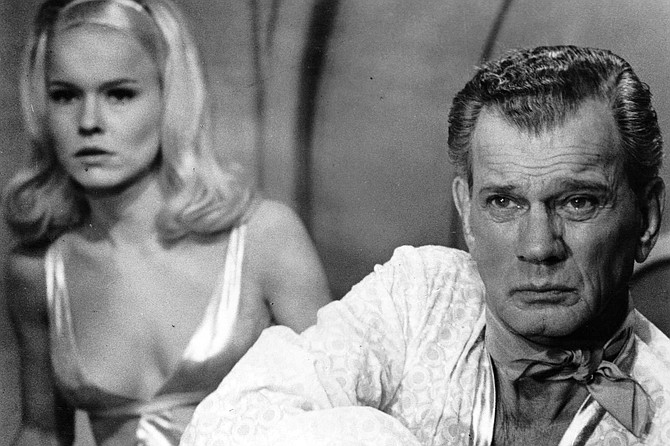
Let’s harken back to a time when DVDs were arranged on the rental rack spine side out and alphabetically by title. One never knew what unknown riches were just a lateral scan of the eye away when mining an evening’s entertainment. In the case of Latitude Zero, one evening has lasted a lifetime.
Latitude Zero (1969)
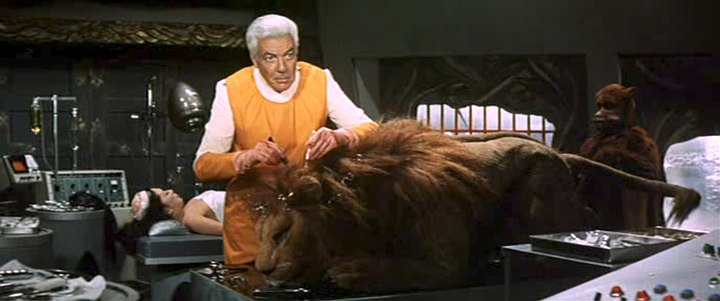
It appeared before me in the sci-fi section at the Sports Arena’s late, lamented Blowout Video. The title was familiar; in my storage unit resides a promotional still of Linda Haynes standing behind Joseph Cotten — a bobby pin would get seasick riding the waves of his marcelled headdress — the latter outfitted in decidedly camp attire. A green kerchief secured tightly around the neck, his bare chest exposed beneath a plunging v-neck shirtwaist, Cotten’s Captain McKenzie looks more dinner theatre singing waiter than he does a 200-year-old scientist. Dr. Malik, the villain in the piece, is played by Cesar Romero, a mad doctor bent on ruling the universe but not before proving himself capable of transplanting the wings of a papier mache vulture on the back of an FAO Schwarz stuffed lion. (The Alpha was launched in 1805: McKenzie is 204-years-old and Malik one year his junior.) How’s this for kinky irony? Romero plays the romantic lead (opposite no less than the second Mrs. Cotten, Patricia Medina) when all that’s missing from Cotten’s butch calypso poolboy is a pair of dangling maracas.
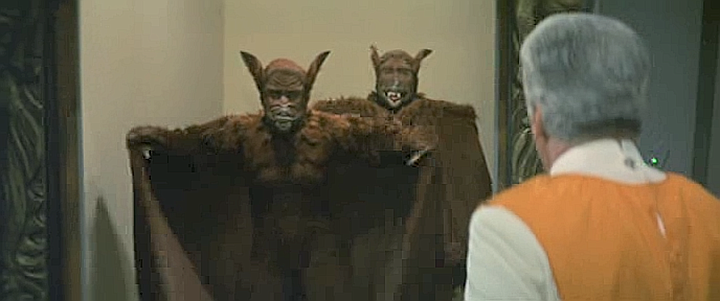
Did the mention of Blowout Video stir bittersweet memories? The paradoxical signage that topped the post at the intersection of Midway and Rosecrans read Deja Vu Showgirls while the cursive neon tubing in the window spelled out “Kids’’ and “Family.” (The headquarters of the Gentlemen’s Club were located in a second-floor suite.) And please pay no attention to the men behind the saloon doors that housed a more specialized type of video — the adult variety that encouraged audience participation. (A co-owner once confided that the majority of their revenue came from the rentals of X-rated titles.) Just slightly bigger than your average Blockbuster, the space was thoughtfully arranged and unduly sunny; plenteous picture windows contributed to a constant exposure to daylight. Pricier For Sale titles — housed in clear, oversized plastic cases with locking pins — would be unlatched only at point of purchase. Though nowhere near as knowledgeable as the Hanfords over at Kensington Video, the staff was friendly, and best of all, they encouraged shoppers to spend pressureless hours browsing the stacks. It was here that I was first drawn to the cinematic point on the celluloid map where the equator and the International Date Line cross paths.
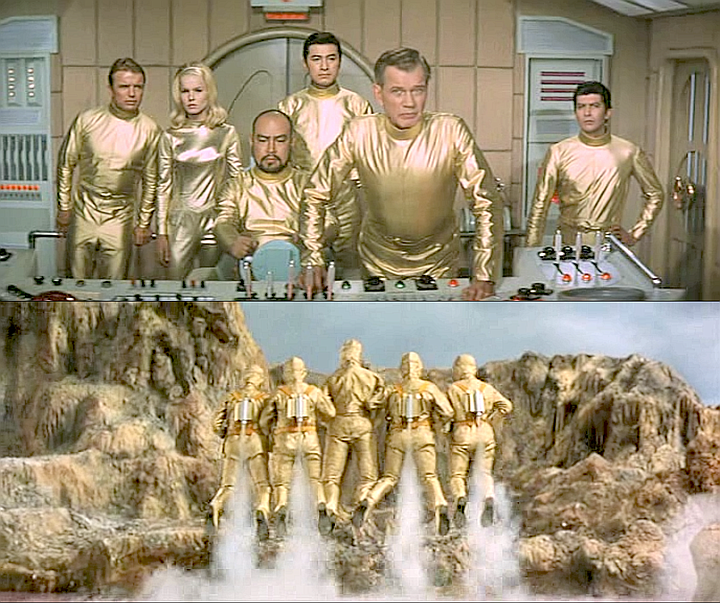
We begin aboard the largest oceanographic vessel in the world, the Japanese research ship Fuji, and a blast of genuine-sounding technospeak from McKenzie doubling as our sonorous narrator. He bombards us with talk of courses, bearings, and mention of the Cromwell Current drawing the ship eastward in the direction of Ecuador. A team of specialists — Dr. Ken Tashiro (Akira Takarada), Dr. Jules Masson (Masumi Okada), and photojournalist Perry Lawton (Richard Jaeckel) — are placed in a yellow diving bell and dunked in the deep to research the mighty current. Fate intervenes in the form of seismic activity, leaving McKenzie no choice but to turn the Alpha, his souped-up ultrasonic submarine, into a rescue vessel. Rest assured, when the seismograph indicates trouble on the ocean floor, that means it’s time to start depth-charging a fleet of miniatures in a Toho tub.
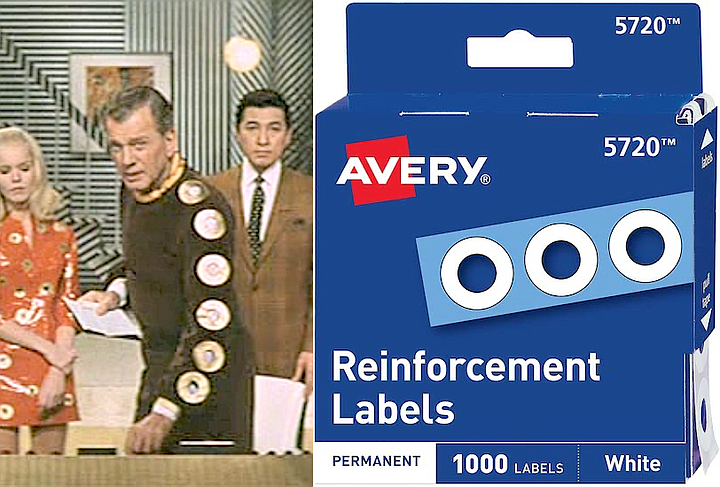
The American cast was flown to Japan just in time for producer Don Sharp to file for bankruptcy. It was up to co-producer Toho to foot the majority of the film’s cost, which may account for some of the slap-dashedness. Old school effects and a commitment to nonsensical logic drive the film. No expenses seem to have been spared when it came to character attire. From Cotten’s v neck jumper to Romero’s caped conquistador (reminiscent of a background player in Captain from Castile), the costumes are even more outlandish than the script. Hand-crafted underwater miniatures, flamboyant apparel, and the garish Eastmancolor design associated with Toho monster movies from this era cry out for repeat viewings. There must have been a sale on gold lame at Japan’s Yardage town. Not since the Solid Gold Dancers called it quits has there been this much sheening fabric on display. Sensing the stowaway’s desire to slip out of their beastly sweats and into something more exclusive, McKenzie directs man-servant Cobo (Kin Ōmae) to fish through the Captain’s armoire in search of three houndstooth sport coats and matching mock turtlenecks, no alterations needed. And pay particular attention to Romero’s man cave, designed by Bedrock, Slate, & Flintstone. Scratch your head all you want, not a second of your time will be spent looking at your watch.
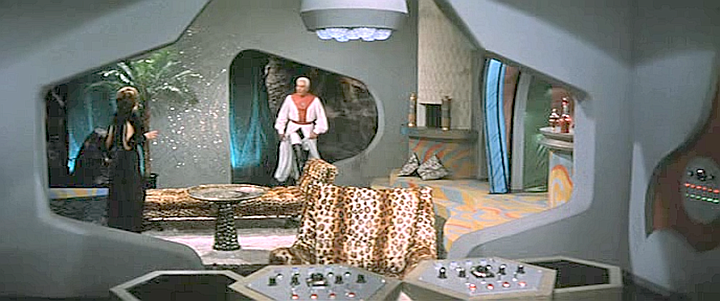
Produced on the heels of Romero’s tour of duty as the Joker, the producers couldn’t resist adding two bat-suited humans that make the toy lion seem real by comparison. From a sadistic brain-transplant to a climactic battle between Cotten’s crew and Romero’s flying lion, the film is bound to leave one speechless, if nothing else. An amplification serum grows the beast to three times its size, and the ending is straight out of The Wizard of Oz, right down to the flying monkeys. Come on! You know you want to see this. According to IMBD, “When the television syndication contracts had expired this film became unavailable, reportedly due to a dispute over the rights.” Oddly enough, I could not find a streaming source, but the DVD is available on Amazon. It’s a keeper!


Let’s harken back to a time when DVDs were arranged on the rental rack spine side out and alphabetically by title. One never knew what unknown riches were just a lateral scan of the eye away when mining an evening’s entertainment. In the case of Latitude Zero, one evening has lasted a lifetime.
Latitude Zero (1969)

It appeared before me in the sci-fi section at the Sports Arena’s late, lamented Blowout Video. The title was familiar; in my storage unit resides a promotional still of Linda Haynes standing behind Joseph Cotten — a bobby pin would get seasick riding the waves of his marcelled headdress — the latter outfitted in decidedly camp attire. A green kerchief secured tightly around the neck, his bare chest exposed beneath a plunging v-neck shirtwaist, Cotten’s Captain McKenzie looks more dinner theatre singing waiter than he does a 200-year-old scientist. Dr. Malik, the villain in the piece, is played by Cesar Romero, a mad doctor bent on ruling the universe but not before proving himself capable of transplanting the wings of a papier mache vulture on the back of an FAO Schwarz stuffed lion. (The Alpha was launched in 1805: McKenzie is 204-years-old and Malik one year his junior.) How’s this for kinky irony? Romero plays the romantic lead (opposite no less than the second Mrs. Cotten, Patricia Medina) when all that’s missing from Cotten’s butch calypso poolboy is a pair of dangling maracas.

Did the mention of Blowout Video stir bittersweet memories? The paradoxical signage that topped the post at the intersection of Midway and Rosecrans read Deja Vu Showgirls while the cursive neon tubing in the window spelled out “Kids’’ and “Family.” (The headquarters of the Gentlemen’s Club were located in a second-floor suite.) And please pay no attention to the men behind the saloon doors that housed a more specialized type of video — the adult variety that encouraged audience participation. (A co-owner once confided that the majority of their revenue came from the rentals of X-rated titles.) Just slightly bigger than your average Blockbuster, the space was thoughtfully arranged and unduly sunny; plenteous picture windows contributed to a constant exposure to daylight. Pricier For Sale titles — housed in clear, oversized plastic cases with locking pins — would be unlatched only at point of purchase. Though nowhere near as knowledgeable as the Hanfords over at Kensington Video, the staff was friendly, and best of all, they encouraged shoppers to spend pressureless hours browsing the stacks. It was here that I was first drawn to the cinematic point on the celluloid map where the equator and the International Date Line cross paths.

We begin aboard the largest oceanographic vessel in the world, the Japanese research ship Fuji, and a blast of genuine-sounding technospeak from McKenzie doubling as our sonorous narrator. He bombards us with talk of courses, bearings, and mention of the Cromwell Current drawing the ship eastward in the direction of Ecuador. A team of specialists — Dr. Ken Tashiro (Akira Takarada), Dr. Jules Masson (Masumi Okada), and photojournalist Perry Lawton (Richard Jaeckel) — are placed in a yellow diving bell and dunked in the deep to research the mighty current. Fate intervenes in the form of seismic activity, leaving McKenzie no choice but to turn the Alpha, his souped-up ultrasonic submarine, into a rescue vessel. Rest assured, when the seismograph indicates trouble on the ocean floor, that means it’s time to start depth-charging a fleet of miniatures in a Toho tub.

The American cast was flown to Japan just in time for producer Don Sharp to file for bankruptcy. It was up to co-producer Toho to foot the majority of the film’s cost, which may account for some of the slap-dashedness. Old school effects and a commitment to nonsensical logic drive the film. No expenses seem to have been spared when it came to character attire. From Cotten’s v neck jumper to Romero’s caped conquistador (reminiscent of a background player in Captain from Castile), the costumes are even more outlandish than the script. Hand-crafted underwater miniatures, flamboyant apparel, and the garish Eastmancolor design associated with Toho monster movies from this era cry out for repeat viewings. There must have been a sale on gold lame at Japan’s Yardage town. Not since the Solid Gold Dancers called it quits has there been this much sheening fabric on display. Sensing the stowaway’s desire to slip out of their beastly sweats and into something more exclusive, McKenzie directs man-servant Cobo (Kin Ōmae) to fish through the Captain’s armoire in search of three houndstooth sport coats and matching mock turtlenecks, no alterations needed. And pay particular attention to Romero’s man cave, designed by Bedrock, Slate, & Flintstone. Scratch your head all you want, not a second of your time will be spent looking at your watch.

Produced on the heels of Romero’s tour of duty as the Joker, the producers couldn’t resist adding two bat-suited humans that make the toy lion seem real by comparison. From a sadistic brain-transplant to a climactic battle between Cotten’s crew and Romero’s flying lion, the film is bound to leave one speechless, if nothing else. An amplification serum grows the beast to three times its size, and the ending is straight out of The Wizard of Oz, right down to the flying monkeys. Come on! You know you want to see this. According to IMBD, “When the television syndication contracts had expired this film became unavailable, reportedly due to a dispute over the rights.” Oddly enough, I could not find a streaming source, but the DVD is available on Amazon. It’s a keeper!
Comments